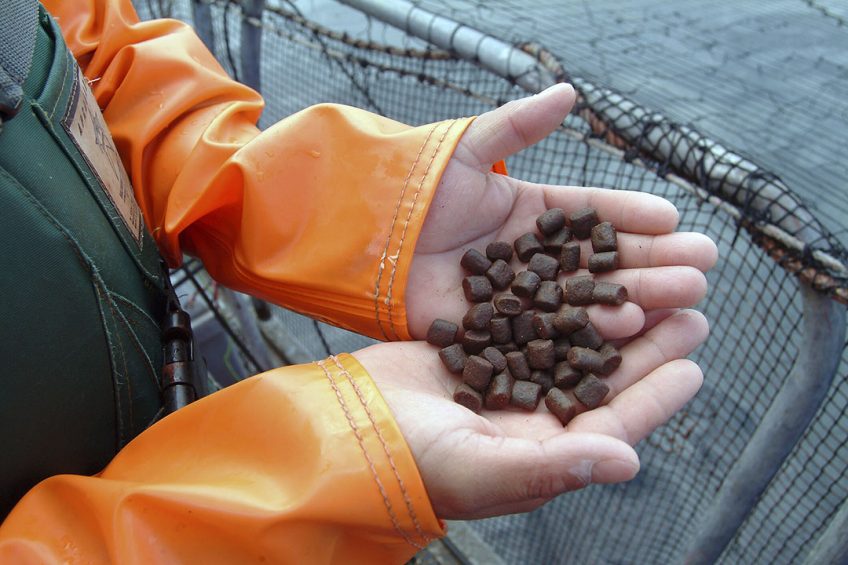Mycotoxins in aquaculture: A mitigation approach in turbot

Aquaculture is the fastest-growing food production industry in the world. Due to concerns about sustainability, the need to replace fish meal with plant-based protein alternatives becomes more urgent. However, plant-based ingredients are often contaminated with mycotoxins, increasing the health risks to fish.
Plant-based ingredients in commercial fish diets include maize, soybean meal and various cereal grains, each representing a potential source of mycotoxins.
Mycotoxins in fish feed a widespread problem
Mycotoxin-contaminated fish feed is a widespread problem, especially in tropical regions and developing countries where the farmers themselves often make fish feeds under inappropriate conditions with improper milling and/or storage. In addition to their impact on fish health, some mycotoxins can also accumulate in fish tissue, thereby posing a possible food safety risk.
About mycotoxins in aquaculture
According to a recent risk assessment study on mycotoxin contamination in fish feeds in Europe, deoxynivalenol (DON) is one of the primary mycotoxins present. DON is produced by over 50 species of Fusarium fungi, which mainly infect crops such as wheat and maize before harvest. Fusarium fungi produce a range of mycotoxins, such as fumonisins, the trichothecenes — most strongly associated with chronic and fatal toxic effects in animals and humans — and zearalenone, which is known to affect the fertility of many animal species, including aquatic species such as fish and shrimp.
The impact of mycotoxins depends on several factors including:
- The type and quantity of mycotoxins in the feed,
- Feeding level,
- Duration of exposure
- The species of fish
Most common issues include:
- Reduced growth performance,
- Immune suppression
- Increased mortality
These are often associated with other on-farm concerns, so the mycotoxin risk is currently underestimated.
Impact of DON on gastrointestinal barrier
Previous studies in mammals have demonstrated a reduction in weight gain and nutrient utilisation, immunosuppression, oxidative stress and organ damage associated with the ingestion of DON-contaminated diets. The digestive tract represents the first barrier against feed contaminants, such as DON, but few studies have focused on the effects of DON on the digestive tract of aquatic animals. Deoxynivalenol levels of 0.5 and 1.0 ppm in the diet significantly reduced body weight and growth rate in white shrimp, while FCR and survival were not affected.
In fish, a study showed that rainbow trout had sensitive taste acuity for DON and reduced their feed intake as the DON concentration in the diet increased from 1 -13 ppm, resulting in reduced growth and feed efficiency.
Another study observed that weight gain, feed intake and feed efficiency (FE, gain:feed) of trout decreased significantly (p<0.05) with increasing levels of DON in the diets, starting at levels of 0.5 ppm. Significant histopathological changes in the liver and intestine with increasing dietary levels of DON were also reported. Atlantic salmon diets with 3.7 mg/kg of DON resulted in a 20% reduction in feed intake, 18% increase in FCR and a 31% reduction in specific growth rate. DON causes oxidative stress in cells by damaging mitochondria function through the excessive release of free radicals, including reactive oxygen species (ROS) that induce lipid peroxidation or decrease antioxidant enzyme activity. Rapidly proliferating cells with a high protein turnover, such as immune cells, hepatocytes and epithelial cells of the digestive tract, are predominantly affected by DON.
How can we protect fish from the impacts of mycotoxins?
At present, one of the most effective and commonly used approaches is introducing feed additives with mycotoxin mitigation properties to reduce toxic effects within the animal. A recent example of successful mycotoxin mitigation in aquatic species was reported in a study of turbot at the Ocean University in China. Researchers investigated the effects of dietary DON on the growth performance, immune response and intestinal health of turbot and the mitigation efficacy of yeast cell wall extract (YCWE, Mycosorb) to meet this challenge.
The study showed that a diet contaminated with 3 mg/kg DON significantly reduced the weight gain, specific growth rate and feed efficiency ratio of fish (Table 1) and reduced immunoglobulin M and complement 4 concentrations in serum. Contaminated turbot diets caused alterations in detoxification capacity; lower activity of superoxide dismutase, catalase and total antioxidant capacity but higher malondialdehyde content and gut barrier; lower expression of tight junction proteins (claudin-4 and occludin) and immunity and higher expression of interleukin-1β in the intestine. Additionally, DON-contaminated diets reduced the abundance of potential helpful bacteria and increased the abundance of potential pathogens found in the intestine. The addition of YCWE, particularly to diets contaminated with 3 mg/kg DON and supplemented by 0.2% YCWE, markedly improved growth performance (Table 1), immune response and enhanced the intestinal health of the turbot.
The current study showed that dietary YCWE lessened the toxic effects caused by dietary DON in turbot and has the potential to be used as an effective strategy to mitigate the negative impacts of DON in fish feed.
Full list of references available on request.











